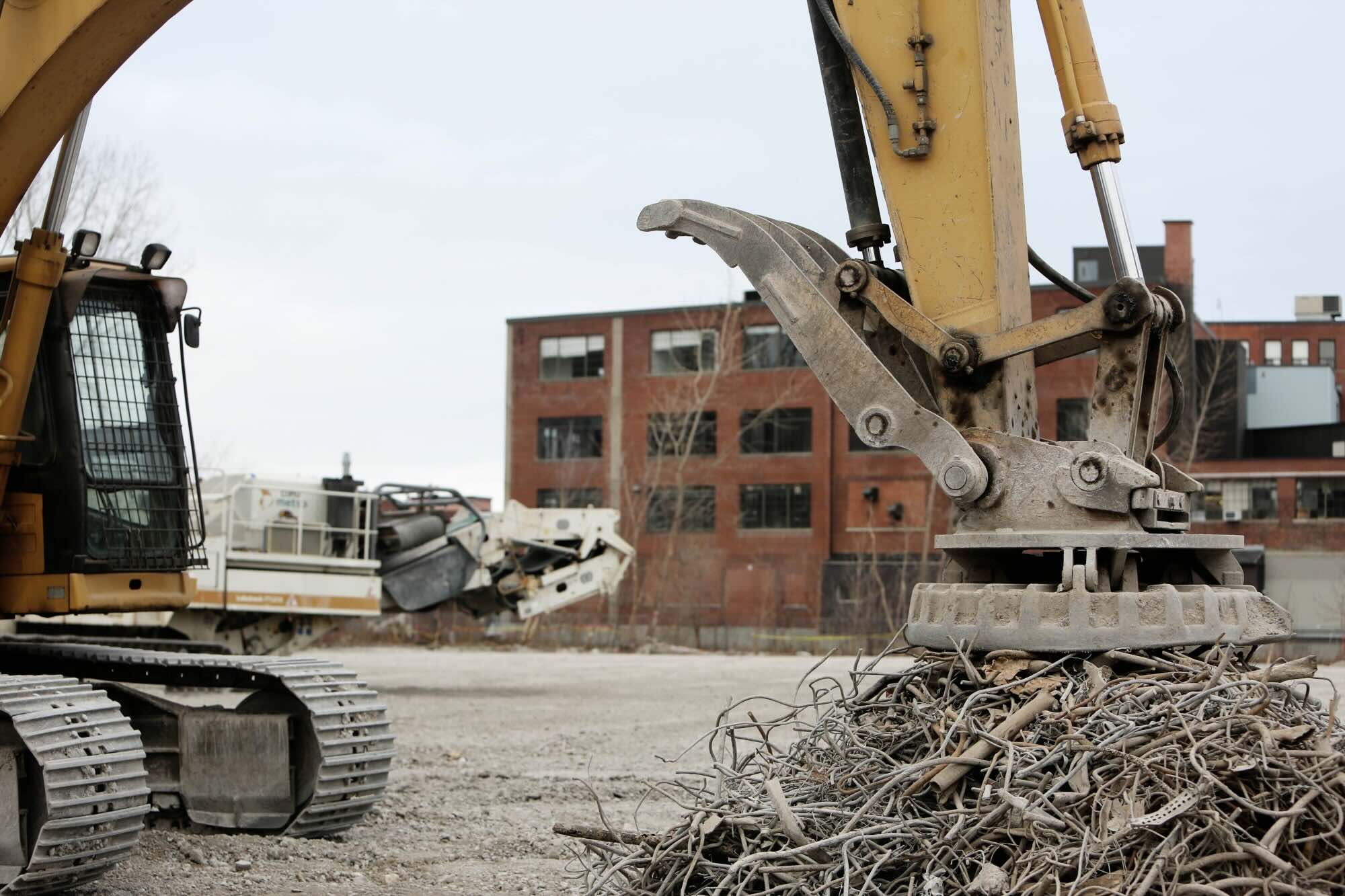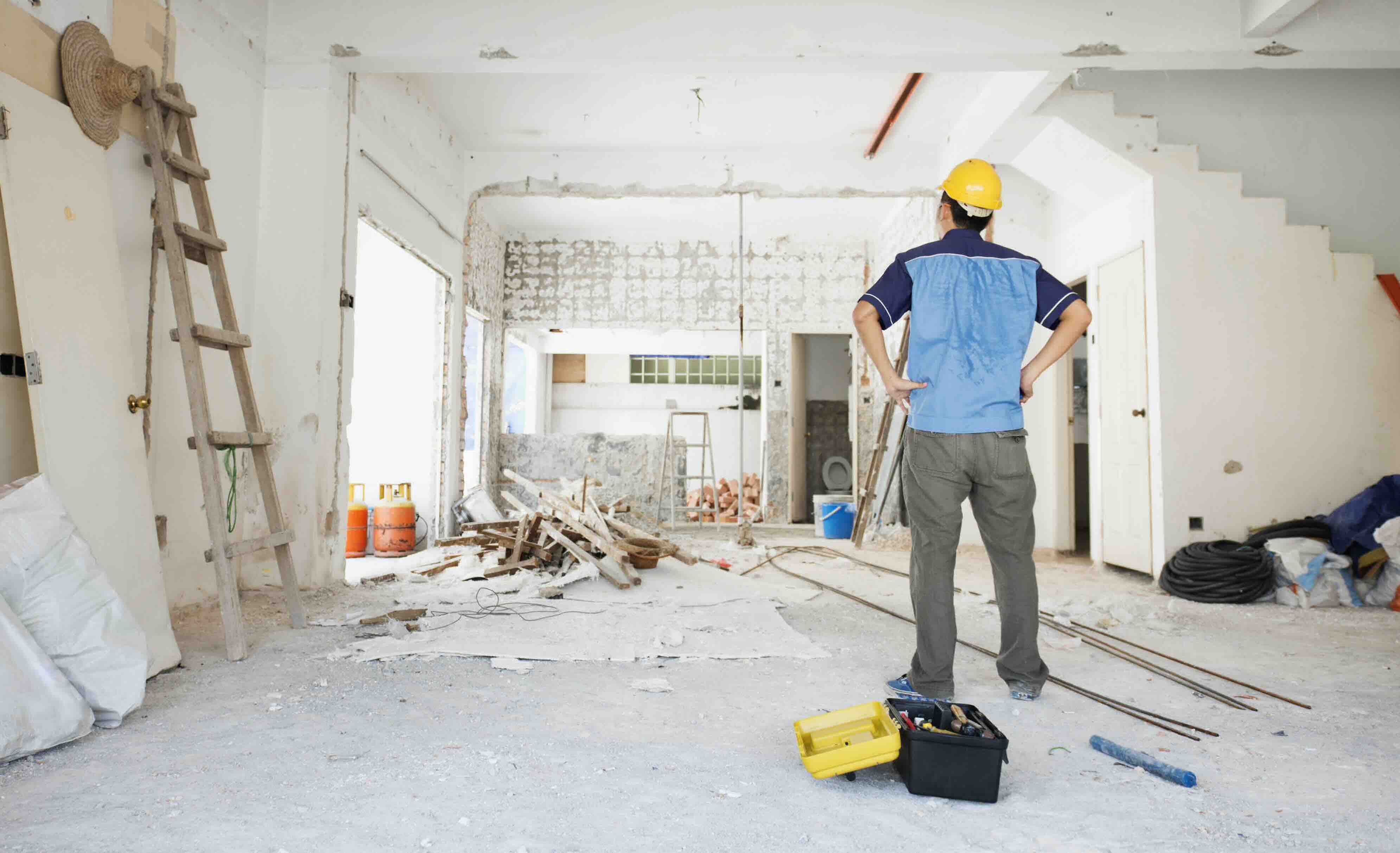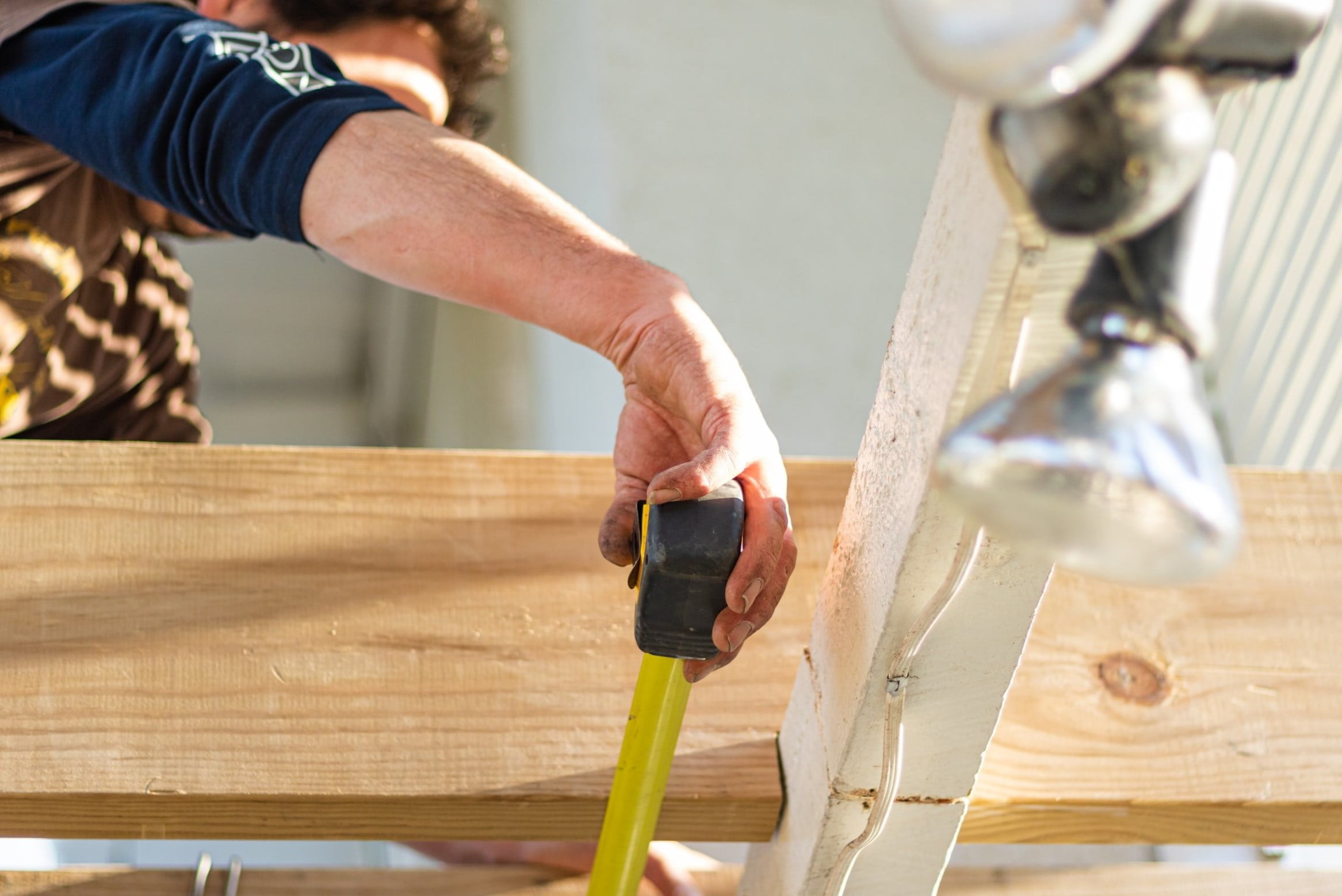Home>diy>Building & Construction>What Is Considered Construction Debris


Building & Construction
What Is Considered Construction Debris
Modified: February 5, 2024
Discover what is considered construction debris and learn how to manage and dispose of building-construction waste effectively. Ensure a cleaner and safer environment.
(Many of the links in this article redirect to a specific reviewed product. Your purchase of these products through affiliate links helps to generate commission for Storables.com, at no extra cost. Learn more)
Introduction
Construction debris refers to the waste and discarded materials generated from construction, demolition, renovation, or excavation activities. It encompasses a wide range of materials such as concrete, wood, bricks, metals, plaster, insulation, roofing shingles, and more. Construction debris is a natural byproduct of the building process and is generated in large quantities on construction sites.
Proper management and disposal of construction debris is crucial to maintain a clean and sustainable environment. In recent years, there has been increasing awareness about the environmental impact of construction waste and the need for sustainable practices in the construction industry.
This article will delve into the definition of construction debris, its common types and examples, the sources and regulations surrounding its disposal, and the importance of recycling and sustainable practices in handling construction waste.
Let’s explore the world of construction debris and understand how it affects our surroundings and how we can minimize its impact.
Key Takeaways:
- Construction debris includes materials like concrete, wood, metals, and plastics generated from construction activities. Proper handling and recycling are crucial to minimize its environmental impact and promote sustainability.
- Understanding the sources and types of construction debris is essential for effective waste management. Recycling, reusing materials, and complying with regulations are key to creating a sustainable construction industry.
Read more: What Is Considered Overhead In Construction
Definition of Construction Debris
Construction debris, also known as construction waste or building waste, refers to the materials that are generated during construction, demolition, renovation, or excavation activities. These materials include various types of solid waste, such as concrete, wood, brick, metals, drywall, asphalt, plastic, glass, and roofing materials.
Construction debris can be categorized into two main types: inert and non-inert waste. Inert waste includes materials that do not undergo physical, chemical, or biological transformations and do not pose a threat to human health or the environment when properly managed. Examples of inert waste in construction include concrete, brick, ceramic tiles, and rock.
Non-inert waste, on the other hand, consists of materials that can decompose, release toxic substances, or pose a risk to human health and the environment if not handled correctly. This includes items such as wood, plastics, insulation materials, carpeting, electrical wiring, and hazardous waste generated during construction activities.
It is important to note that construction debris is distinct from municipal solid waste (MSW), which refers to the waste generated by households, businesses, and institutions. Construction debris requires separate handling and disposal methods due to its unique composition and potential environmental impact.
Construction debris can vary in size, volume, and composition depending on the specific project. It can range from small, scattered materials like nails and screws, to larger items such as concrete blocks or structural beams. Regardless of its form, construction debris needs to be handled and disposed of properly to minimize its impact on the environment and public health.
Common Types of Construction Debris
Construction debris can encompass a wide variety of materials used in the building and demolition process. Here are some of the most common types of construction debris:
- Concrete: Concrete debris is one of the most abundant types of construction waste. It includes broken concrete, concrete blocks, and leftover concrete from construction projects.
- Wood: Wood waste is another common type of construction debris. It can range from scrap lumber and timber to used pallets, plywood, and discarded furniture.
- Brick and Masonry: Brick and masonry debris are generated from the demolition of old buildings and structures. These materials are often recycled or crushed for use as aggregate in new construction projects.
- Metals: Construction sites generate a significant amount of metal waste, including steel beams, copper wiring, aluminum frames, and plumbing fixtures. Metal debris is highly recyclable and can be repurposed for various applications.
- Drywall: Drywall, also known as gypsum board or plasterboard, is a common interior building material. It can become construction debris when replaced during renovation or discarded as waste.
- Roofing Materials: Roofing debris includes shingles, tiles, felt paper, and metal roofing materials. These materials are regularly replaced during roof repairs or replacements and can create a substantial amount of waste.
- Plastics: Construction projects often generate plastic waste from packaging materials, pipes, cables, and insulation. Recycling and proper disposal of plastic debris are essential to minimize its environmental impact.
- Glass: Glass waste can originate from windows, mirrors, and glass panels in building structures. It is crucial to handle and recycle glass debris carefully due to its potential for causing injuries and environmental contamination.
- Asphalt and Pavement: Road construction and repair activities produce asphalt and pavement debris. These materials can be recycled and used for creating new asphalt surfaces or as a base material for other construction projects.
These are just a few examples of the common types of construction debris. The composition and quantity of construction waste can vary depending on the nature and scale of the project. Proper management and disposal of construction debris are essential to reduce waste generation and promote sustainable practices within the construction industry.
Examples of Construction Debris
Construction debris encompasses a wide range of materials that are generated during construction, demolition, renovation, or excavation activities. Here are some specific examples of construction debris:
- Broken concrete: Concrete debris is a common type of construction waste. It can include broken concrete slabs, blocks, and leftover concrete from various construction projects. This type of debris can be recycled and used as aggregate for new concrete.
- Scrap wood: Wood waste is another significant component of construction debris. It can include scrap lumber, timber, pallets, and discarded furniture. Wood debris can be reused, repurposed, or recycled for landscaping, biomass energy, or reclaimed wood products.
- Demolition materials: When old buildings or structures are demolished, the resulting debris can consist of bricks, masonry, tiles, and concrete blocks. These materials can be crushed and recycled for use in new construction projects or roadways.
- Metal scraps: Construction sites generate a significant amount of metal waste, including steel beams, copper wiring, aluminum frames, and plumbing fixtures. Metal debris is highly recyclable and can be melted down and reused in various manufacturing processes.
- Drywall waste: Drywall, also known as gypsum board or plasterboard, is commonly used for interior walls and ceilings. During renovation or demolition projects, old or damaged drywall can become construction debris. Drywall waste can be recycled and used for creating new drywall products.
- Roofing materials: Roofing debris can include shingles, tiles, metal sheets, and roofing felt materials. When roofs are repaired or replaced, these materials are often discarded as waste. Proper recycling and disposal of roofing debris can help reduce the environmental impact.
- Plastic waste: Construction projects generate plastic waste from various sources, including packaging materials, pipes, insulation, and cables. Recycling and responsible disposal of plastic debris are crucial to prevent pollution and minimize the use of virgin plastic materials.
- Glass waste: Construction debris can also include glass from windows, mirrors, and glass panels used in building structures. Proper handling and recycling of glass debris are important for reducing waste and preserving resources.
- Asphalt and pavement waste: Road construction and repair activities produce asphalt and pavement debris. These materials can be recycled and used for creating new asphalt surfaces or as a base material for other construction projects.
These are just a few examples of the construction debris generated on construction sites. Proper management, recycling, and disposal of construction debris are essential to minimize waste and promote sustainable practices in the construction industry.
Sources of Construction Debris
Construction debris is generated from various sources throughout the construction, demolition, renovation, or excavation process. Understanding the sources of construction debris is important in developing effective waste management strategies. Here are some common sources of construction debris:
- New Construction: The construction of new buildings, houses, or infrastructure projects generates a substantial amount of construction debris. This includes materials such as excess concrete, bricks, wood scraps, packaging materials, and unused construction materials.
- Demolition: When old buildings or structures are demolished, the resulting debris becomes a significant source of construction waste. Demolition debris may include concrete, brick, metal, wood, and other building materials that need to be properly managed and disposed of.
- Renovation and Remodeling: Renovating or remodeling existing structures can generate construction debris. This includes materials such as old drywall, flooring, cabinets, fixtures, insulation, and wiring. These materials need to be carefully removed, separated, and disposed of to ensure proper waste management.
- Excavation and Site Clearance: Excavation activities, including digging foundations, trenches, or underground utilities, can produce large amounts of soil, rocks, and other debris. Proper handling and disposal of excavated materials are essential to prevent soil erosion and ensure environmental compliance.
- Construction and Packaging Materials: Construction debris can also originate from packaging materials used for transporting construction materials and equipment. These materials include cardboard, plastic wraps, pallets, and Styrofoam. Proper recycling and disposal of packaging waste can help reduce the overall construction debris.
- Unused or Excess Materials: Construction sites often have leftover or unused materials that become construction debris. This can include excess concrete, bricks, tiles, lumber, plumbing fixtures, electrical wiring, and other construction supplies. Proper inventory management and planning can help minimize the waste generated from unused materials.
- Landscaping and Clearing: Landscaping activities, such as clearing trees, shrubs, and vegetation, can generate organic waste, including branches, leaves, and grass clippings. It is important to properly compost or dispose of green waste to prevent contamination and promote sustainability.
These are some of the common sources of construction debris. Proper waste management practices, including recycling, reusing, and responsible disposal, are essential to minimize the environmental impact of construction activities and ensure a sustainable future.
Construction debris includes materials such as wood, drywall, concrete, metal, insulation, roofing materials, and more. It’s important to properly dispose of construction debris to comply with local regulations and to minimize environmental impact.
Read more: Where To Dispose Construction Debris
Regulations and Guidelines for Construction Debris Disposal
Proper disposal of construction debris is essential to protect the environment, promote public health, and ensure the sustainability of construction projects. Various regulations and guidelines are in place to govern the handling and disposal of construction waste. Here are some key regulations and guidelines for construction debris disposal:
- Local Waste Management Regulations: Local governments and municipalities often have specific regulations regarding the disposal of construction debris. These regulations may include guidelines for waste sorting, recycling requirements, permits for waste disposal, and the use of licensed waste disposal facilities.
- Environmental Protection Agencies: Environmental protection agencies at the national or regional level enforce regulations related to the disposal of construction debris. These agencies set standards for waste management practices, hazardous material handling, and environmental impact assessments for construction projects.
- Construction and Demolition (C&D) Waste Management Plans: Many jurisdictions require construction and demolition projects to develop waste management plans. These plans outline strategies for minimizing waste, promoting recycling and reuse, and complying with local waste management regulations.
- Green Building Certifications: Green building certifications such as LEED (Leadership in Energy and Environmental Design) and BREEAM (Building Research Establishment Environmental Assessment Method) provide guidelines and standards for sustainable construction practices, including proper waste management and recycling of construction debris.
- Waste Sorting and Recycling: Regulations often mandate the separation and sorting of different types of construction debris at the source. This includes setting requirements for recycling and ensuring that recyclable materials are properly separated and sent to recycling facilities.
- Hazardous Waste Disposal: Construction debris may contain hazardous materials such as asbestos, lead-based paint, or chemical residues. Specific regulations govern the proper handling, removal, and disposal of hazardous waste to prevent contamination and protect workers’ health.
- Use of Licensed Waste Disposal Facilities: Regulations may require construction projects to dispose of their waste at licensed waste disposal facilities. These facilities are equipped to handle different types of construction debris and ensure proper disposal and recycling practices.
It is essential for construction companies, contractors, and project managers to be aware of and comply with the regulations and guidelines set forth by local and national authorities. By following these regulations, construction projects can contribute to a cleaner and healthier environment while promoting sustainability in the construction industry.
Environmental Impact of Construction Debris
Construction debris has a significant environmental impact, contributing to waste generation, resource depletion, and pollution. Understanding the environmental consequences of construction waste is crucial for adopting sustainable practices and minimizing its impact on the planet. Here are some of the key environmental impacts of construction debris:
- Landfill Space: Construction debris occupies a significant amount of space in landfills. As construction activities continue to increase, landfills become overwhelmed, leading to the need for more land for waste disposal. This can result in the destruction of natural habitats and valuable ecosystems.
- Natural Resource Depletion: The production of construction materials, such as concrete and metals, requires the extraction and processing of finite natural resources. This extraction contributes to deforestation, soil erosion, and the depletion of mineral and fossil fuel reserves.
- Emissions and Pollution: Construction activities and the transportation of construction debris contribute to air and water pollution. Construction vehicles emit greenhouse gases, dust, and other pollutants that degrade air quality. Improper disposal of construction debris can also lead to soil and water contamination, impacting ecosystems and human health.
- Energy Consumption: The production, transportation, and disposal of construction materials consume a significant amount of energy. The extraction of raw materials, manufacturing, and construction processes contribute to carbon emissions and the consumption of non-renewable energy sources.
- Climate Change: The construction sector and its associated debris contribute to climate change through the release of greenhouse gases. The production of construction materials, particularly cement, is a significant source of carbon dioxide emissions. The improper disposal of construction debris and the methane emissions from decomposing organic waste in landfills further contribute to climate change.
- Biodiversity Loss: Construction activities, including the clearing of land and destruction of natural habitats, can lead to the loss of biodiversity. Many construction projects encroach upon vulnerable ecosystems, displacing wildlife and threatening endangered species.
To mitigate the environmental impact of construction debris, it is imperative to adopt sustainable practices. This includes reducing waste generation through proper planning, employing recycling and reuse strategies for construction materials, promoting energy-efficient construction methods, and adhering to waste management regulations and guidelines. By prioritizing environmentally-friendly practices, the construction industry can contribute to the preservation of our natural resources and a healthier planet.
Recycling and Sustainable Practices for Construction Debris
Recycling and adopting sustainable practices for construction debris are essential for reducing waste, conserving resources, and minimizing the environmental impact of construction activities. Here are some key strategies and practices for recycling and managing construction debris sustainably:
- Material Reuse: One of the most effective ways to reduce construction waste is to prioritize material reuse. Salvaging and reusing materials such as bricks, lumber, doors, and fixtures not only minimizes waste but also reduces the need for new materials, conserving resources. When undertaking a construction or renovation project, consider salvaging and repurposing materials whenever possible.
- Recycling Programs: Implement recycling programs on construction sites and encourage the separation and recycling of different types of construction debris. Set up designated recycling bins for materials such as concrete, metal, wood, plastic, and cardboard. Partner with local recycling facilities to ensure that the collected materials are properly recycled.
- C&D Recycling Facilities: Utilize Construction and Demolition (C&D) waste recycling facilities that specialize in processing and recycling construction debris. These facilities have the capacity to sort, separate, and recycle different materials, including concrete, wood, metal, and roofing materials. Working with certified C&D recycling facilities ensures that a significant portion of construction waste is diverted from landfills.
- Preventing Waste: Adopt a proactive approach to waste reduction by carefully planning construction projects to minimize waste generation. Order materials in the appropriate quantities, reuse leftover materials from previous projects, and implement efficient material management practices. Effective project management can significantly reduce excess waste.
- Use Recycled Materials: Opt for construction materials with recycled content whenever possible. Recycled concrete aggregate, reclaimed wood, recycled plastic products, and other eco-friendly materials can be used as alternatives to virgin materials. This reduces the demand for new resources and promotes the circular economy.
- Hazardous Waste Management: Properly handle and dispose of hazardous materials in accordance with regulations. Train construction staff on the safe handling and storage of hazardous waste and ensure that it is transported to licensed disposal facilities that specialize in handling such materials.
- Collaboration and Education: Foster collaboration among contractors, suppliers, and project stakeholders to promote sustainable practices. Share knowledge and resources, educate workforce on waste management and recycling practices, and encourage the adoption of sustainable construction practices.
By incorporating these recycling and sustainable practices into construction projects, the industry can significantly reduce the environmental impact of construction debris. Building a circular economy where materials are reused, recycled, and repurposed promotes resource conservation, waste reduction, and a more sustainable future.
Proper Handling and Disposal of Construction Debris
Proper handling and disposal of construction debris are essential to ensure safety, prevent environmental contamination, and comply with waste management regulations. Here are some key guidelines for the proper handling and disposal of construction debris:
- Separation and Sorting: Separate different types of construction debris at the source to facilitate recycling and disposal. Set up designated bins or areas for materials such as concrete, wood, metal, plastics, and hazardous waste. Proper separation and sorting of debris make recycling and disposal more efficient.
- Recycling and Reuse: Prioritize recycling and reuse of construction debris whenever possible. Partner with local recycling facilities and ensure that recyclable materials are properly processed. Explore opportunities for repurposing materials internally or donating them to organizations that accept construction materials for reuse.
- Hazardous Waste Disposal: Identify and properly handle hazardous materials during construction activities. This includes asbestos-containing materials, lead-based paint, solvents, and other chemicals. Employ licensed professionals for the safe removal, transportation, and disposal of hazardous waste in compliance with local regulations.
- Proper Storage and Containment: Store construction debris in appropriate containers or on-site storage areas. Ensure that containers are secure, labeled, and free from leaks to prevent environmental contamination. Hazardous materials should be stored separately and in accordance with applicable safety guidelines.
- Transportation: Properly secure construction debris during transportation to prevent spills or littering. Cover open containers or trucks to prevent materials from blowing away or causing hazards on the road. Follow all transportation regulations to ensure safe and responsible transport of construction debris.
- Compliance with Regulations: Familiarize yourself with local regulations regarding construction debris disposal. Ensure compliance with waste management guidelines, permits, and reporting requirements. Stay updated on changes to regulations and adjust waste management practices accordingly.
- Utilize Licensed Waste Disposal Facilities: Dispose of construction debris at licensed waste disposal facilities that are equipped to handle different types of waste. These facilities have the necessary infrastructure and processes to ensure proper disposal or recycling of construction debris.
- Documentation and Record-Keeping: Maintain accurate records of construction debris disposal, including the types and quantities of materials disposed of, recycling receipts, and hazardous waste manifests. Proper documentation is crucial for demonstrating compliance with regulations and ensuring accountability.
By following these guidelines, construction companies can minimize the environmental impact of construction debris and contribute to a more sustainable construction industry. Proper handling and disposal practices not only protect the environment but also ensure the health and safety of workers and the surrounding community.
Conclusion
Proper management and disposal of construction debris are integral to creating a sustainable and environmentally-friendly construction industry. Construction debris, generated from construction, demolition, renovation, and excavation activities, can have significant impacts on landfills, natural resources, pollution, and climate change. However, by implementing recycling and sustainable practices, we can mitigate these environmental impacts and work towards a more sustainable future.
It is crucial for construction companies, contractors, and project managers to understand the different types of construction debris and their sources. By identifying the materials that are commonly found on construction sites, such as concrete, wood, metals, drywall, and plastics, we can develop effective waste management strategies tailored to the specific project.
Recycling is a key component of sustainable construction debris management. By implementing recycling programs, separating materials at the source, and partnering with certified C&D recycling facilities, we can divert a significant amount of construction waste from ending up in landfills. Reusing materials is another important practice that not only reduces waste but also conserves resources.
Proper handling and disposal of hazardous materials are essential for the safety of workers and the environment. Adhering to regulations and employing licensed professionals for the removal and disposal of hazardous waste is crucial to prevent contamination and ensure compliance.
Educating construction staff, contractors, and project stakeholders about waste management practices, implementing waste reduction strategies, and fostering collaboration can further enhance sustainable construction practices. By implementing sustainable practices and complying with waste management regulations, we can minimize the environmental impact of construction debris and contribute to the preservation of our natural resources.
In conclusion, the proper management and disposal of construction debris are critical for a sustainable construction industry. By prioritizing recycling, reusing materials, implementing sustainable practices, and complying with regulations, we can work towards a greener future where construction activities are conducted with minimal environmental impact. By taking these steps, we can create a more sustainable and environmentally-conscious construction industry for generations to come.
Frequently Asked Questions about What Is Considered Construction Debris
Was this page helpful?
At Storables.com, we guarantee accurate and reliable information. Our content, validated by Expert Board Contributors, is crafted following stringent Editorial Policies. We're committed to providing you with well-researched, expert-backed insights for all your informational needs.














0 thoughts on “What Is Considered Construction Debris”